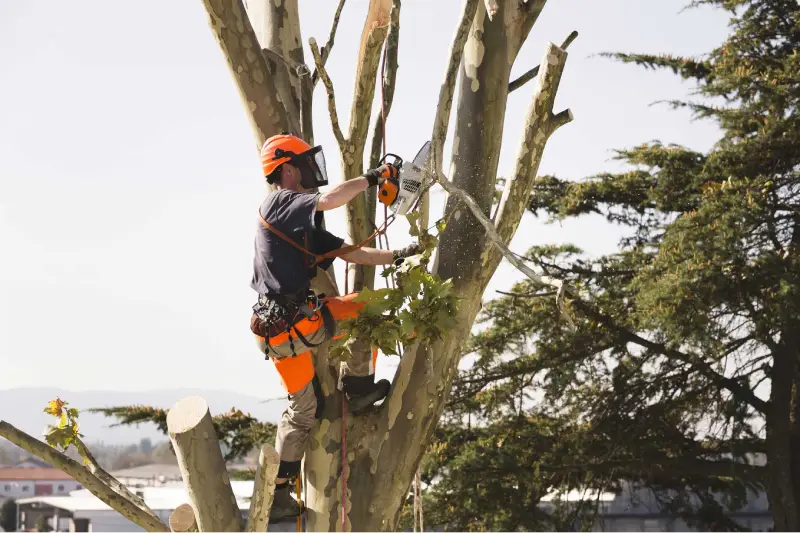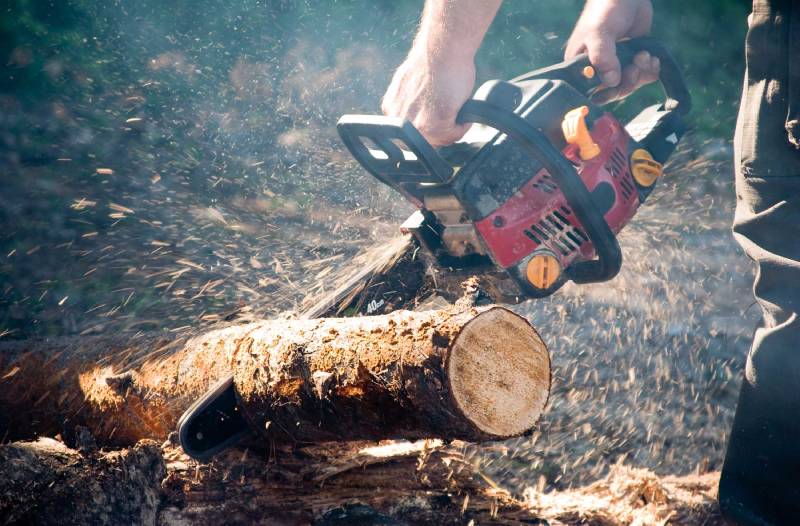Trees are not just beautiful additions to your yard; they are essential components of the ecosystem, providing shade, oxygen, and habitat for various creatures. However, maintaining healthy trees requires more than just occasional watering. This is where tree service comes into play. In this article, we’ll delve into the basics of tree service, why it’s crucial for your yard, signs that indicate your trees need professional care, the importance of pruning and trimming, when tree removal is necessary, and how proper care enhances tree health.
Understanding Tree Service Basics
Tree service encompasses a range of services aimed at maintaining the health and appearance of trees in residential and commercial landscapes. From routine maintenance tasks like pruning and trimming to emergency services such as tree removal after a storm, tree service professionals specialize in keeping trees healthy, safe, and aesthetically pleasing.

What Does Tree Service Encompass?
Tree service includes various tasks such as pruning, trimming, tree removal, stump grinding, fertilization, pest and disease management, and emergency storm damage cleanup. These services are essential for ensuring the vitality and longevity of your trees while also safeguarding your property and the surrounding environment.
Why Regular Tree Maintenance Matters?
Regular tree maintenance is crucial for several reasons. Firstly, it promotes the overall health and vigor of trees, reducing the risk of disease and infestation. Secondly, it enhances the aesthetic appeal of your property by keeping trees well-groomed and symmetrical. Lastly, proactive maintenance helps prevent potential hazards such as falling branches, which can cause property damage or injury.
Signs Your Yard Needs Professional Tree Care
Identifying when your trees require professional care is essential for maintaining a safe and healthy landscape. Look out for signs such as dead or decaying branches, leaning trees, visible fungal growth, and sudden changes in tree appearance or behavior. These indicators often signal underlying issues that need to be addressed by trained arborists.
Identifying Tree Health Issues
Tree health issues can manifest in various ways, including leaf discoloration, premature leaf drop, stunted growth, and unusual swelling or lesions on the trunk. By promptly recognizing these symptoms and seeking professional assistance, you can prevent further deterioration and potentially save the tree.
Recognizing Tree Hazards And Risks
Trees pose potential hazards when their structural integrity is compromised. Leaning trees, cracked branches, and hollowed trunks are common indicators of structural weakness. Additionally, trees located near utility lines or buildings may pose a risk of property damage or personal injury if not properly maintained.
The Importance Of Tree Pruning And Trimming
Pruning and trimming are essential components of tree care that promote healthy growth, structural stability, and aesthetic appeal. Proper pruning removes dead or diseased branches, improves airflow and sunlight penetration, and shapes the tree to desired proportions.
How Pruning Promotes Tree Health?
Pruning stimulates new growth, strengthens branch attachments, and removes competing or crossing branches that can impede the tree’s development. By eliminating deadwood and maintaining proper branch spacing, pruning reduces the risk of disease transmission and infestation while enhancing the tree’s natural form and function.
Best Practices For Tree Trimming
When trimming trees, it’s essential to follow best practices to avoid causing damage or stress. Start by identifying the branch collar—the swollen area where the branch meets the trunk—and make clean cuts just outside this point to promote proper healing. Avoid over-pruning, as it can weaken the tree and make it more susceptible to pests and diseases.
Tree Removal: When Is It Necessary?
While tree removal should always be a last resort, certain circumstances may necessitate it. Dead, diseased, or structurally compromised trees pose significant risks to property and safety and may need to be removed to prevent accidents or property damage.
Reasons For Tree Removal
Common reasons for tree removal include severe pest or disease infestations, extensive decay or rot, proximity to power lines or structures, and irreparable structural damage. Additionally, trees that pose a threat during severe weather events, such as hurricanes or windstorms, may need to be removed preemptively.
Environmental Considerations
Before proceeding with tree removal, consider the environmental impact and explore alternatives such as tree cabling or bracing, which can reinforce weak limbs and prolong the tree’s life. Additionally, consult with a certified arborist to assess the tree’s health and explore options for preservation or replacement.
Enhancing Tree Health With Proper Care
Beyond routine maintenance tasks, several practices can enhance tree health and vitality, ensuring long-term sustainability.
Soil Management And Fertilization
Maintaining healthy soil is essential for supporting tree growth and nutrient uptake. Soil testing can identify nutrient deficiencies or imbalances, allowing for targeted fertilization to promote healthy root development and overall vigor.
Disease And Pest Prevention
Preventing tree diseases and pest infestations requires proactive measures such as regular inspections, proper sanitation, and appropriate cultural practices. Implementing integrated pest management strategies can minimize reliance on chemical treatments while effectively controlling pests and diseases.
Conclusion
Tree service plays a crucial role in maintaining the health, safety, and beauty of your landscape. By understanding the basics of tree care, recognizing signs that indicate professional intervention is needed, and implementing proper maintenance practices, you can ensure the well-being of your trees and enjoy a thriving outdoor environment for years to come. Whether it’s pruning and trimming to promote growth and structural integrity or removal of hazardous trees to mitigate risks, investing in tree service is a wise decision that pays dividends in the long run.


